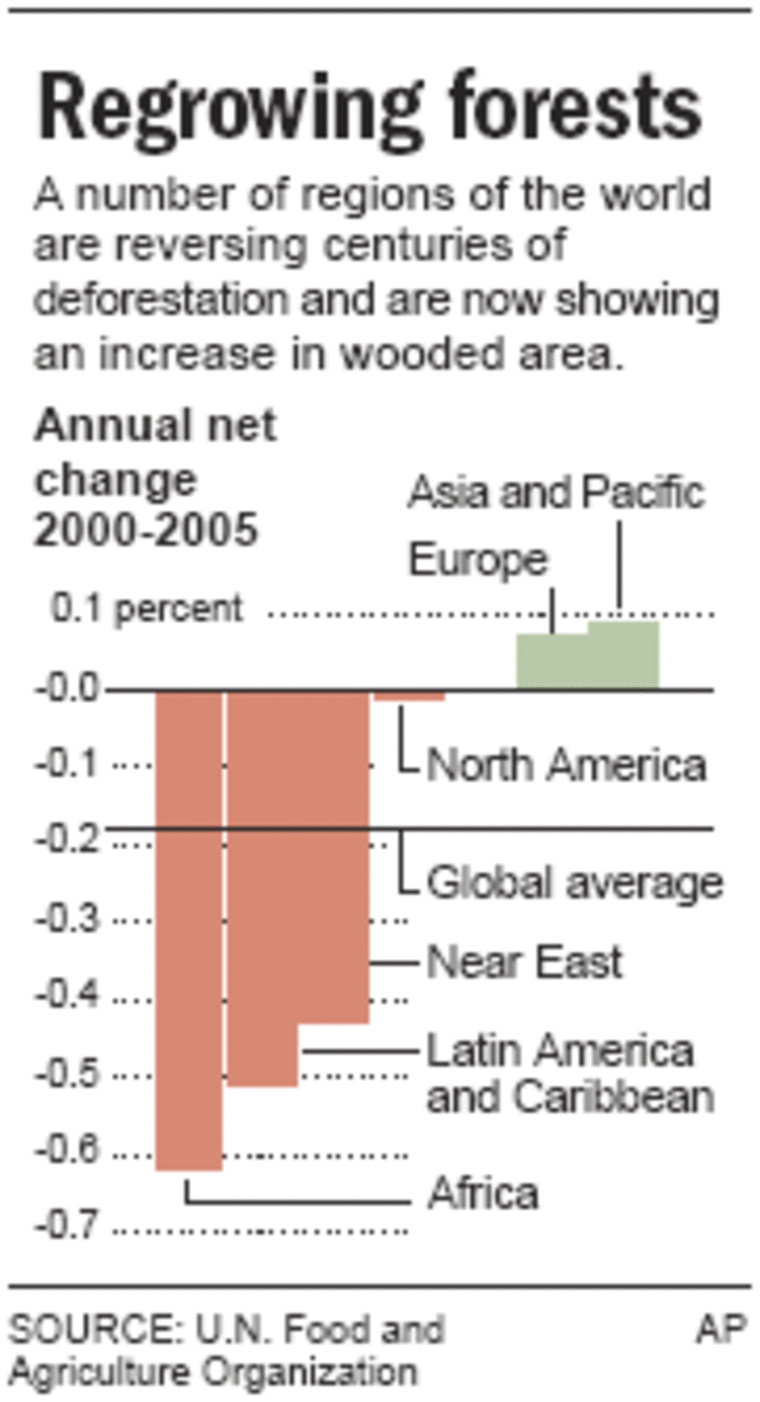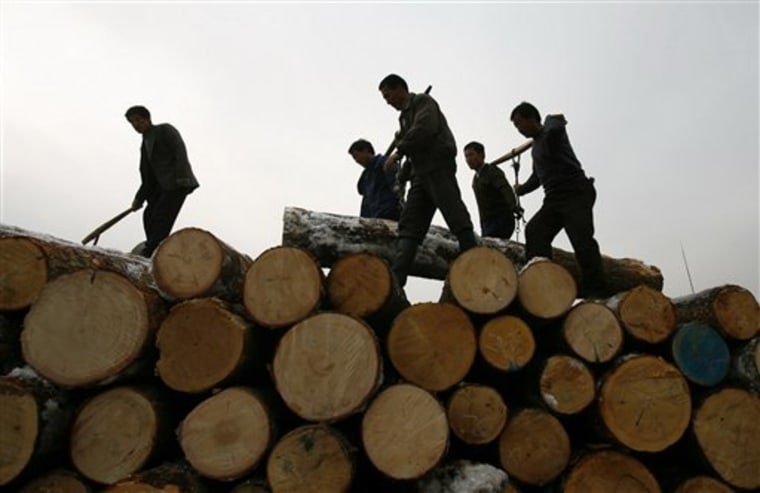An area of forest twice the size of Paris disappears every day although the rate of global deforestation has started to slow, according to a United Nations report issued on Tuesday.
"Deforestation continues at an unacceptable rate" of about 32 million acres a year, said Wulf Killmann, a forestry expert at the Food and Agriculture Organization, which published the report.
The destruction of forests not only reduces habitat available for wildlife but also releases carbon stored in trees into the atmosphere, adding emissions that many scientists fear are warming Earth.
Demand for agricultural land is one of the main reasons that forests continue to be erased.
Killman noted in a positive sign that reforestation is increasing in some areas.
A huge tree planting program in China, for example, more than offset large-scale deforestation in other parts of Asia such as Indonesia, to produce a net increase in the amount of forested land in the Asia-Pacific region during the first five years of the decade.
China's economic boom has driven demand for wood and the country has adopted a tree planting policy, not only to reduce its reliance on imported timber, but also for soil protection, especially in areas near the Gobi desert, Killmann said.
In Africa and Latin America, there are fewer positive signs.
Forested land in Latin America — home to the Amazon — fell to less than half of the continent's area. By 2005, forests were estimated at 47 percent of the total land, from 51 in 1990.

More than half of global deforestation in the period 2000-2005 happened in Africa, the report said, underlining its conclusion that poverty and war are major contributors to forest destruction.
Although economic growth often contributes to illegal logging, the FAO concluded that development was, on the whole, beneficial to forests as wealthier countries were more likely to establish conservation policies.
Citing the growth in forests in India and China, it concluded: "Economic development appears to be a necessary condition for deforestation to cease."
The United States reported an annual increase in forest area of 0.12 in the 1990s and 0.05 percent from 2000 to 2005. That increase, however, was accompanied by deforestation in Mexico, which reported a 0.52 percent decrease in the 1990s and a 0.40 percent decrease in wooded areas from 2000 to 2005. Canada reported no change during those periods.
In Europe, the report said a net increase was due to efforts in Spain and Italy, followed by Bulgaria, France, Portugal and Greece.
Africa, which accounts for about 16 percent of the global forests, lost over 9 percent of its trees between 1990 and 2005, the agency said. In Latin America and the Caribbean, home to nearly half of the world's forests, 0.5 percent were lost every year between 2000 and 2005 — up from an annual net rate of 0.46 percent in the 1990s.
Forests cover just under 9.88 billion acres, about 30 percent of the world's land area. The world lost 3 percent of its wooded areas between 1995 and 2000, the agency said.
